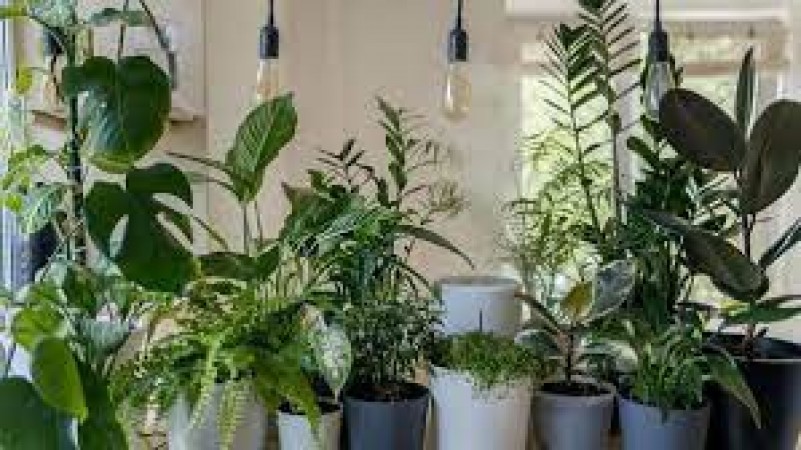
In an era plagued by environmental concerns, finding ways to combat pollution at home has never been more critical. One effective solution is to cultivate specific plants that can significantly improve the quality of indoor air. While no single plant can entirely eliminate pollution, incorporating the right green companions into your living space can make a substantial difference. These natural air purifiers can help you breathe easier, bringing fresh, clean air into your home.
Indoor air pollution is a silent and often underestimated threat. It results from a variety of sources, including:
Harmful Emissions: Many cleaning products and paints release harmful emissions into the air. These emissions can include volatile organic compounds (VOCs) like formaldehyde and benzene, which can lead to various health issues.
Solution: To combat the effects of household chemicals, consider introducing air-purifying plants into your home. These plants can help absorb and neutralize these harmful compounds, thereby improving the indoor air quality.
Common Culprits: Allergens such as dust mites, pet dander, and pollen are common in many homes. These allergens can trigger or exacerbate respiratory problems and allergies.
Solution: Certain indoor plants have been proven to reduce allergen levels. For example, the Peace Lily is known for its ability to improve air quality by reducing allergens.
Sources: VOCs are emitted from various sources in your home, including furniture, carpets, and building materials. Long-term exposure to VOCs can lead to health issues.
Solution: Indoor plants like Snake Plant and Bamboo Palm can help absorb these VOCs, thereby reducing their concentration in your indoor air.
Importance of Ventilation: Inadequate ventilation can trap indoor pollutants, leading to stale and polluted air inside your home.
Solution: While plants alone cannot address ventilation issues, they can certainly improve the air quality by removing pollutants. However, it's essential to ensure proper ventilation in your home to complement the efforts of these air-purifying plants.
Benefits: Aloe Vera is not only known for its soothing gel but also its air-purifying qualities. It's particularly effective at removing formaldehyde from the air, a common indoor pollutant that can be found in many household products.
Care: Aloe Vera requires bright, indirect sunlight and well-draining soil. Be sure not to overwater it.
Benefits: The Snake Plant is often called the "bedroom plant" as it absorbs carbon dioxide and releases oxygen during the night. This makes it an excellent choice for bedrooms.
Care: It is quite hardy and can tolerate low light conditions. Allow the soil to dry between waterings.
Benefits: Spider Plants are effective at reducing airborne pollutants, including formaldehyde and xylene. They are known for their air-purifying abilities.
Care: Spider Plants are adaptable and can thrive in various conditions. They prefer well-draining soil and indirect sunlight.
Benefits: The Peace Lily is not only a beautiful addition to your home but also a powerful air purifier. It can help eliminate ammonia, benzene, and other harmful substances.
Care: Keep the soil consistently moist and provide bright, indirect light.
Benefits: Bamboo Palm is a natural humidifier, releasing moisture into the air while removing toxins like formaldehyde and benzene.
Care: It thrives in bright, indirect sunlight and consistently moist soil.
Benefits: Rubber Plants are great at removing VOCs and other indoor air pollutants. They are hardy and can be an attractive addition to your home.
Care: They prefer bright, indirect light and well-draining soil.
Benefits: English Ivy is excellent at reducing mold in your home. It's particularly useful in areas prone to high humidity.
Care: Provide bright light and keep the soil evenly moist.
By introducing these plants into your living space, you can enjoy several benefits:
Cleaner Air: These plants act as natural air filters, removing harmful chemicals from the air. They can help reduce the concentration of indoor pollutants, making your home a healthier place to live.
Healthier Living: Cleaner air means better health. You'll experience a decrease in respiratory issues and allergies, and an overall improvement in well-being.
Natural Decor: Indoor plants not only serve a functional purpose but also add beauty and a sense of tranquility to your home. They create a natural and soothing environment.
Variety: There is a wide range of indoor plants to choose from, allowing you to select the ones that best complement your home's interior.
Low Effort: Most of these plants are low-maintenance and don't require a green thumb. With the right care, they can thrive and continue to improve your indoor air quality.
Cost-Effective: Investing in indoor plants is a cost-effective way to enhance your living space. They are a one-time purchase that continues to provide benefits over time.
Different plants have varying light requirements, so be sure to place them in the right spot in your home. Here's a general guideline:
Proper watering is crucial for the health of your indoor plants. Here are some tips:
Cleaning the leaves of your indoor plants periodically is essential. Dust and dirt can accumulate on the leaves, hindering the plants' ability to perform photosynthesis effectively. Regular dusting allows your plants to breathe and work their magic more efficiently. Incorporating indoor plants into your living space is an eco-friendly and effective way to combat indoor pollution. While these green allies may not entirely eradicate all pollutants, they can significantly enhance your home's air quality. Planting the right species and providing them with proper care will result in a breath of fresh, clean air that you and your family can enjoy. So, why not embrace the power of nature and create a healthier environment within the confines of your home? Your indoor jungle will not only look splendid but also provide you with a breath of fresh, clean air every day.
Dengue havoc in Delhi! Cases increased by 71% in a month, doctors warned
Know how many kiwis you can eat in a day, eating too much can be harmful